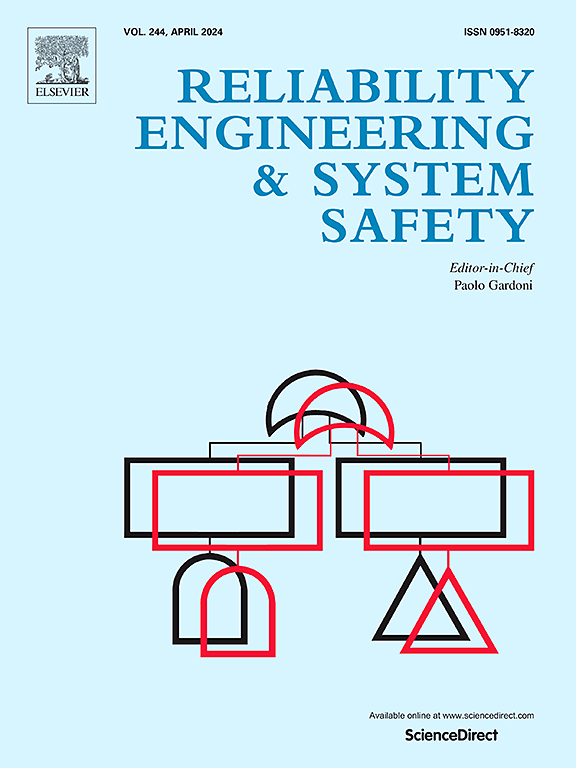Personalized federated learning for remaining useful life prediction under scenarios of fragmented out-of-distribution data
IF 9.4
1区 工程技术
Q1 ENGINEERING, INDUSTRIAL
引用次数: 0
Abstract
Accurate Remaining Useful Life (RUL) prediction model relies on full-lifecycle degradation features of the equipment. However, fragmented out-of-distribution (OOD) data due to specific working condition, equipment service time and communication packet loss inevitably affect the prediction accuracy. This study proposes a personalized federated RUL prediction method for fragmented OOD data scenarios, aiming to integrate OOD data fragments provided by different clients. In this means, a federated prediction model can be established to capture the full-lifecycle degradation features by incorporating fragmented OOD data. We focus on establishing a correctable cycle-consistent alignment mechanism driven by health state similarity to solve the challenging problem arisen by inter-client spatiotemporal heterogeneity. A novel health assessment index based on the quantile of hypothesis test is designed to capture the degradation feature required in the cycle-consistent alignment mechanism. Once new fragmented OOD data is available, a personalized federation strategy is developed by designing an adversarial mechanism between degradation features involved in the previous old OOD data and the new OOD data, such that previous degradation features can be further extended to a more full degradation feature. The superiority of the proposed method in RUL prediction was validated on fragmented OOD data collected on benchmark bearing prognostic system (BPS) platform.
个性化联合学习,在碎片化的非分布数据场景下进行剩余使用寿命预测
准确的剩余使用寿命(RUL)预测模型依赖于设备的全生命周期退化特征。然而,由于特定的工作状态、设备使用时间和通信丢包等原因,导致的碎片化的out- distribution (OOD)数据不可避免地影响预测的准确性。本研究提出了一种面向碎片化OOD数据场景的个性化联邦RUL预测方法,旨在整合不同客户端提供的OOD数据碎片。通过这种方法,可以建立一个联邦预测模型,通过合并碎片化的OOD数据来捕获全生命周期的退化特征。我们专注于建立一个由健康状态相似性驱动的可纠正的周期一致对齐机制,以解决客户端间时空异质性带来的挑战性问题。设计了一种基于假设检验分位数的健康评价指标,以捕捉循环一致对齐机制所需的退化特征。一旦有新的碎片化的OOD数据可用,通过在旧的OOD数据和新OOD数据中涉及的退化特征之间设计对抗机制,开发个性化的联邦策略,从而使以前的退化特征可以进一步扩展为更完整的退化特征。在基准轴承预测系统(BPS)平台上采集的碎片化OOD数据上验证了该方法在RUL预测中的优越性。
本文章由计算机程序翻译,如有差异,请以英文原文为准。
求助全文
约1分钟内获得全文
求助全文
来源期刊

Reliability Engineering & System Safety
管理科学-工程:工业
CiteScore
15.20
自引率
39.50%
发文量
621
审稿时长
67 days
期刊介绍:
Elsevier publishes Reliability Engineering & System Safety in association with the European Safety and Reliability Association and the Safety Engineering and Risk Analysis Division. The international journal is devoted to developing and applying methods to enhance the safety and reliability of complex technological systems, like nuclear power plants, chemical plants, hazardous waste facilities, space systems, offshore and maritime systems, transportation systems, constructed infrastructure, and manufacturing plants. The journal normally publishes only articles that involve the analysis of substantive problems related to the reliability of complex systems or present techniques and/or theoretical results that have a discernable relationship to the solution of such problems. An important aim is to balance academic material and practical applications.
 求助内容:
求助内容: 应助结果提醒方式:
应助结果提醒方式:


